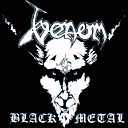Metal began in prototype form with Black Sabbath, whose trademark occultism symbolized life in terms of the eternal and ideal, while their gritty, sensual, lawless guitar gave significance to the immediate and real. The resulting fusion of the bohemian generation with a nihilistic, dark and morbid streak birthed early metal. Those who had rejected the hippies and found no solace in social order embraced this music and lost bohemians everywhere began to find new directions in this sound.
 Having been thus born of the rock tradition early metal remained much within that framework, with dual lineages existing in Black Sabbath, the proto-metal architecturalists, and Led Zeppelin, the blues-folk-rock extravagantists. While the 1970s struggled to develop further the innovations in rock between 1965-1969 the influences that hit metal were primarily from European progressive rock. These musicians used classical theory to give narrative context to themes which in the popular music style repeat through cycling short complementary phrases or riffs which center motives. This technique migrated classical styles adapted from acoustic guitar and espoused structure over total improvisation.
Having been thus born of the rock tradition early metal remained much within that framework, with dual lineages existing in Black Sabbath, the proto-metal architecturalists, and Led Zeppelin, the blues-folk-rock extravagantists. While the 1970s struggled to develop further the innovations in rock between 1965-1969 the influences that hit metal were primarily from European progressive rock. These musicians used classical theory to give narrative context to themes which in the popular music style repeat through cycling short complementary phrases or riffs which center motives. This technique migrated classical styles adapted from acoustic guitar and espoused structure over total improvisation.
As metal grew in the middle 1970s, its fragmented nature brought it both commercial success and hilarity as a retarded younger brother to rock. The rock side coupled with trash rock bands and formed stadium metal, which was the apex of metal's popularity and the nadir of its creativity, with bands being known for musical illiteracy, hedonistic excess and often mind-wrenching stupidity in interviews. These bands would come into full flower in the 1980s, but marked their territory well before the turn of the decade. On the other hand, however, some of the most dramatic growth in metal occurred when bands merged progressive leanings with desires for traditional solid, sing-along songs.
 From this fork in the metal path came three greats whose influences cannot be underestimated, birthed in the early 1970s but becoming most dramatically influential in the 1980s: Judas Priest, Motorhead, and Iron Maiden. Each had musicians from a progressive background who added new ideas to rock and metal, whether the neoclassical guitar duo of K.K. Downing and Glen Tipton or the melodic basslines of Steve Harris of Iron Maiden. Even Motorhead, the simplest and most basic of the three, wrote songs with a melodic baroque tendency that rivalled that of the Beatles, except without the flourishes and happy feelings. Bridging between psychedelic space rock like founder Lemmy Kilmister's Hawkwind, aggressive punk and simplified metal-rock in the style of Blue Cheer, Motorhead sounded like a glass-gargling vagabond and an impromptu jail session band, but developed much of the technique and basic riff forms for the hybrid music to come.
From this fork in the metal path came three greats whose influences cannot be underestimated, birthed in the early 1970s but becoming most dramatically influential in the 1980s: Judas Priest, Motorhead, and Iron Maiden. Each had musicians from a progressive background who added new ideas to rock and metal, whether the neoclassical guitar duo of K.K. Downing and Glen Tipton or the melodic basslines of Steve Harris of Iron Maiden. Even Motorhead, the simplest and most basic of the three, wrote songs with a melodic baroque tendency that rivalled that of the Beatles, except without the flourishes and happy feelings. Bridging between psychedelic space rock like founder Lemmy Kilmister's Hawkwind, aggressive punk and simplified metal-rock in the style of Blue Cheer, Motorhead sounded like a glass-gargling vagabond and an impromptu jail session band, but developed much of the technique and basic riff forms for the hybrid music to come.
The more obscure and threatening NWOBHM bands grew with the subgenre in the 1970s to oppose commercial slickness with direct and primal music. Angel Witch and Diamond Head and eventually Venom tore technique to its basics to get to the ballad-meets-firefight balance of rebel music. All of these fused the DIY attitude of punk bands with the epic nature of metal and created as a result music that was bold and far-reaching but accessible, both to fans and to those who would like to pick up their own instruments and emulate it.


0 comments:
Post a Comment